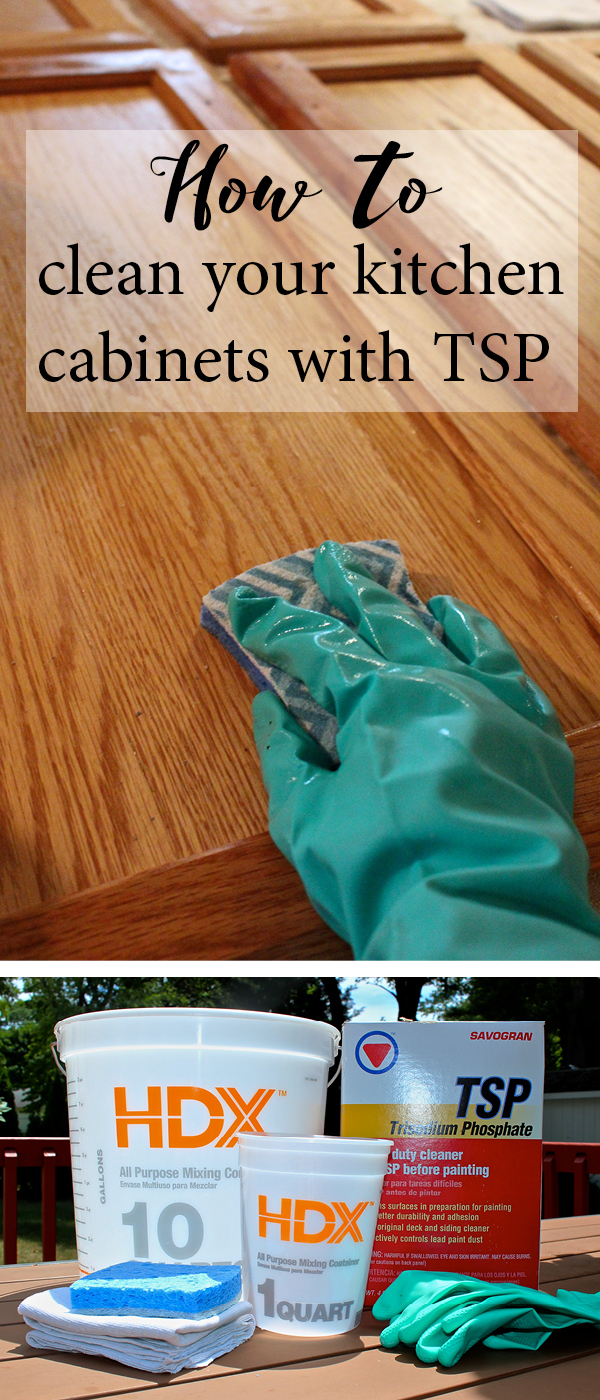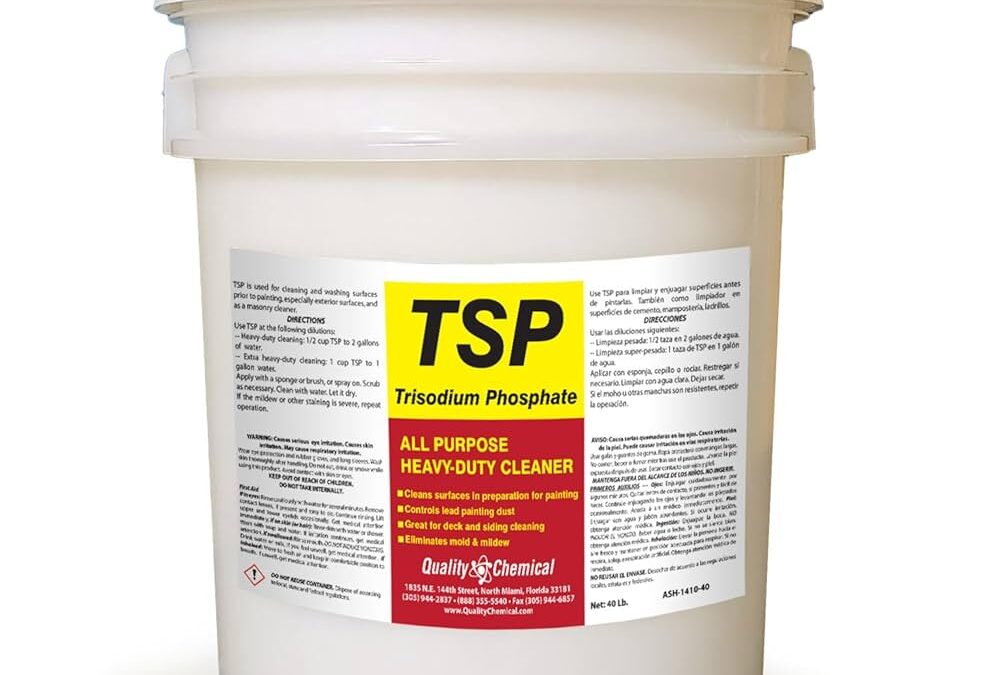Are you tired of staring at your grimy kitchen cabinets and wondering if there’s a magical solution to restore their shine? You’re not alone.
Kitchen cabinets endure daily wear and tear, accumulating layers of grease, grime, and fingerprints. You might have heard about TSP, or trisodium phosphate, as a powerful cleaning agent. But is TSP good for cleaning kitchen cabinets, and more importantly, is it the right choice for your home?
Before you rush to the store, it’s crucial to understand how TSP works and whether it aligns with your cleaning needs. We’ll delve into the benefits and potential drawbacks of using TSP on your kitchen cabinets. We’ll equip you with the knowledge to make an informed decision, ensuring that your cabinets not only look immaculate but are also treated with care. Ready to discover if TSP is your kitchen’s best friend or if you should consider other alternatives? Let’s dive in and unveil the truth.

Credit: www.amazon.com
What Is Tsp?
Cleaning kitchen cabinets can be a daunting task, especially with stubborn grease and grime build-up. One solution that often comes up is TSP, or trisodium phosphate. But what exactly is TSP, and why is it recommended for cleaning? Understanding its composition, properties, and common uses can help you decide whether TSP is the right choice for your kitchen cabinets.
Composition And Properties
TSP is a chemical compound composed of trisodium phosphate. It is known for its powerful cleaning capabilities and is often used as a heavy-duty cleaner. TSP comes in a white powder form that dissolves easily in water, creating a highly effective cleaning solution. Its strong alkaline properties make it excellent at cutting through grease and removing tough stains.
The alkaline nature of TSP helps in breaking down dirt, oils, and residues that accumulate on kitchen surfaces. This makes it an ideal choice when dealing with sticky, stubborn messes. However, it’s important to handle TSP with care, as its potency can also affect skin and surfaces if not used correctly.
Common Uses In Cleaning
TSP is commonly used in home cleaning tasks, particularly in kitchens and bathrooms. It’s effective on surfaces like walls, floors, and cabinets, making it versatile for various cleaning needs. Many homeowners use TSP to prepare surfaces before painting, ensuring they are free from grease and grime for better paint adhesion.
In your kitchen, TSP can be a lifesaver for cleaning cabinet doors and handles. It tackles food residues and fingerprints efficiently. Imagine the relief of seeing your cabinets shine like new after a thorough TSP cleaning session. Yet, it’s crucial to test it on a small area first to ensure it doesn’t damage the finish.
Have you considered what other solutions might rival TSP in efficiency? Could it be time to rethink your cleaning strategy for those stubborn stains?

Credit: www.facebook.com
Benefits Of Using Tsp On Kitchen Cabinets
Trisodium Phosphate, commonly known as TSP, offers many benefits for cleaning kitchen cabinets. It’s a powerful cleaning agent that tackles tough grime and grease. Using TSP can make your cabinets look fresh and new. This cleaning product is often recommended for its effectiveness and ease of use. Explore the specific benefits of using TSP on kitchen cabinets below.
Effective Grease Removal
Grease builds up on kitchen cabinets over time. TSP cuts through grease easily. It cleans deeply, removing sticky residue. Your cabinets will feel clean and smooth. Grease removal restores the natural look of your cabinets. TSP makes this task simple and effective.
Stain And Grime Elimination
Kitchen cabinets often face stains and grime. TSP effectively removes these unwanted marks. It breaks down tough stains and grime. This results in a cleaner appearance. TSP restores the original color of your cabinets. Your kitchen will look brighter and more inviting.
Preparation For Refinishing
Refinishing cabinets requires a clean surface. TSP prepares cabinets by removing old finishes. This ensures new paint or varnish adheres well. Proper preparation leads to better refinishing results. TSP helps achieve a smooth, even finish. It’s an essential step in the refinishing process.
Potential Drawbacks Of Tsp
TSP, or trisodium phosphate, is a powerful cleaner. It’s known for its effectiveness in removing grime and grease. But it may not always be the best choice for kitchen cabinets. There are several potential drawbacks to consider before using TSP.
Surface Damage Risks
TSP can be harsh on surfaces. It might strip finishes or fade colors. Wooden cabinets are particularly vulnerable. The cleaning power of TSP could lead to damage. Always test on a small area first.
Environmental Concerns
TSP is not environmentally friendly. It can contribute to pollution in water systems. Phosphates in TSP can lead to algae growth. This harms aquatic life and disrupts ecosystems. Consider using eco-friendly alternatives.
Safety Precautions
Using TSP requires careful handling. It can irritate skin and eyes. Wear gloves and goggles for protection. Ensure good ventilation when using TSP. Follow all safety instructions on the label.
Alternatives To Tsp
TSP is known for cleaning kitchen cabinets effectively. Yet, safer alternatives exist. Baking soda, vinegar, and dish soap are gentle and eco-friendly. These options reduce harsh chemical exposure while maintaining cabinet cleanliness.
When considering alternatives to TSP for cleaning kitchen cabinets, you might feel overwhelmed by the plethora of options available. TSP, or trisodium phosphate, is a powerful cleaner but not without its drawbacks. It can be harsh and may leave residues that require thorough rinsing. Luckily, there are several effective alternatives that are kinder to both your cabinets and the environment. Let’s dive into some practical options that might already be in your home or easily accessible in stores.Mild Soaps And Detergents
Mild soaps and detergents are often a go-to for a reason: they’re gentle yet effective. You might have dish soap in your kitchen right now that can do the trick. Simply mix a few drops in warm water to create a cleaning solution that won’t strip your cabinets’ finish. Are your cabinets only lightly soiled? A soft cloth dipped in this soapy water can remove grease and grime without damaging the surface. Remember to wipe with a damp cloth afterward to remove any soap residue.Natural Cleaning Solutions
Natural cleaning solutions offer a non-toxic way to spruce up your cabinets. Vinegar and baking soda are household staples that can tackle tough spots. Mix equal parts of vinegar and water in a spray bottle for an easy, effective cleaner. Have you ever tried lemon juice? It’s another option that can cut through grease while leaving a fresh scent. Add a bit of olive oil to your lemon juice solution to condition and shine your wooden cabinets.Commercial Cabinet Cleaners
Commercial cabinet cleaners are tailored specifically for this task, offering a balance of cleaning power and surface protection. These products are available at most grocery or hardware stores and often come with easy-to-follow instructions. Have you seen those all-in-one wipes? They’re convenient for quick cleanups and often leave a protective layer. Just make sure to check that the cleaner you choose is suitable for your cabinet material to avoid any damage. So, what’s your go-to method for cleaning your kitchen cabinets? Have you tried any of these alternatives, or do you have a secret weapon you swear by? Remember, keeping your kitchen looking fresh doesn’t have to be a chore with the right tools in hand.How To Use Tsp Safely
TSP effectively cleans kitchen cabinets when used correctly. Always wear gloves and goggles to protect your skin and eyes. Mix TSP with water, apply gently, and rinse thoroughly to avoid residue.
Thinking about giving your kitchen cabinets a fresh and clean look? Trisodium Phosphate (TSP) might just be what you need. Known for its powerful cleaning properties, TSP can tackle stubborn grease and grime effectively. But using it requires caution. Let’s dive into how you can use TSP safely for your kitchen cabinets.Preparation And Dilution
Before you start, ensure your workspace is well-ventilated. Open windows or use a fan to keep fresh air circulating. TSP is a strong cleaner, so you’ll need to dilute it properly. Mix one tablespoon of TSP with a gallon of warm water. This concentration is usually sufficient for most cleaning tasks. Stir the mixture until the TSP is fully dissolved. Have you ever found yourself wondering if more is better? With TSP, that’s not the case. Stick to the recommended dilution to avoid damaging your cabinets.Application Techniques
Use a sponge or cloth to apply the TSP solution to your cabinets. Start from the top and work your way down to catch any drips. Remember to wring out excess liquid to prevent over-saturating the wood. Scrub gently, focusing on areas with visible stains or grease. Wipe away the solution with a clean, damp cloth to remove any residue. Are you noticing any stubborn spots? Reapply and let it sit for a few minutes before wiping again.Protective Measures
Safety first! Always wear gloves and protective eyewear when working with TSP. It can be harsh on your skin and eyes. Consider wearing old clothes or an apron to protect your clothing. Have you ever spilled something and regretted not being prepared? Taking these precautions can save you from that hassle. Dispose of any leftover solution responsibly, and wash your hands thoroughly after use. Using TSP can be straightforward and effective when done right. Have you tried it on your kitchen cabinets before? What was your experience like? Engaging with the right techniques can lead to satisfying results without any mess.Real-life Experiences
TSP cleans kitchen cabinets effectively, removing grease and dirt with ease. It’s a reliable choice for a spotless finish. Many find it affordable and easy to use, making it popular in household cleaning routines.
Real-life experiences often provide the most insightful perspectives on using TSP (trisodium phosphate) for cleaning kitchen cabinets. Homeowners and cleaning enthusiasts alike have shared their success stories, as well as the challenges they faced, when incorporating TSP into their cleaning routines. Understanding these experiences can help you decide if TSP is the right choice for your kitchen cabinet cleaning needs.Success Stories
Many homeowners have found that TSP effectively cuts through grease and grime on kitchen cabinets. One user shared how they restored their kitchen’s original shine by mixing TSP with warm water and applying it with a sponge. The ease of removing years of accumulated grease left them thoroughly impressed. Another positive experience involved a DIY enthusiast who used TSP to prep their cabinets for a fresh coat of paint. They noticed that the paint adhered better, and the overall finish was smoother. This made TSP a go-to choice for their future painting projects.Challenges Faced
Despite its effectiveness, some users encountered challenges while using TSP. One common issue was the need for protective gear, as TSP can be harsh on the skin. A user mentioned they learned the hard way by not wearing gloves, which resulted in skin irritation. Another challenge was the residue left behind if not rinsed thoroughly. A homeowner noted that they had to spend extra time ensuring all traces of TSP were washed off to prevent dulling the finish of their cabinets. This experience highlighted the importance of a thorough rinse process. Real-life experiences can be a valuable guide when deciding to use TSP for cleaning kitchen cabinets. Have you considered these pros and cons in your cleaning routine?Expert Opinions
When it comes to cleaning kitchen cabinets, TSP (trisodium phosphate) often stands out as a popular choice. But what do the experts have to say about its effectiveness? Here, you’ll find insights from cleaning professionals and environmental experts, offering you a well-rounded perspective on using TSP for your kitchen cabinets.
Cleaning Professionals’ Insights
Cleaning professionals often praise TSP for its powerful grease-cutting abilities. Imagine your kitchen cabinets covered with sticky residue from cooking. TSP can break down this grease efficiently, saving you time and elbow grease.
They also highlight its ease of use. You mix TSP with water, apply it, and watch the grime disappear. However, they advise caution. TSP can be harsh, so wearing gloves and ensuring proper ventilation is crucial.
Experienced cleaners have shared stories where TSP helped restore the shine to old cabinets. It’s like giving your kitchen a facelift with minimal effort. But, they warn against using it on unfinished wood as it can cause damage.
Environmental Experts’ Views
Environmental experts have a slightly different take. They acknowledge TSP’s cleaning power but raise concerns about its environmental impact. TSP can contribute to water pollution, affecting aquatic life.
Some suggest opting for phosphate-free alternatives to reduce ecological footprint. These alternatives can be just as effective without the environmental drawbacks. It’s a choice between immediate results and long-term sustainability.
One expert shared how they switched to eco-friendly cleaners after noticing changes in their local water quality. Such firsthand experiences highlight the importance of considering environmental impacts in your cleaning choices.
What do you value more—clean cabinets or a cleaner planet? It’s a question worth pondering as you decide on the best cleaning solution for your kitchen.

Credit: weekendcraft.com
Frequently Asked Questions
What Is Tsp Cleaner?
TSP, or trisodium phosphate, is a heavy-duty cleaner. It’s effective in removing grease, grime, and stains. It’s commonly used for cleaning kitchen cabinets and preparing surfaces for painting. However, it should be used with caution due to its strong chemical nature.
Always follow safety guidelines when using TSP.
How To Use Tsp On Cabinets?
To use TSP, mix it with water according to the instructions. Apply the solution with a sponge or cloth on the cabinets. Scrub gently to remove dirt and grease. Rinse thoroughly with clean water. Ensure proper ventilation and wear gloves when using TSP.
Is Tsp Safe For Wood Cabinets?
TSP is generally safe for wood cabinets but requires careful use. It can strip finishes if used excessively. Always test it on a small, hidden area first. After cleaning, rinse thoroughly and dry the cabinets. Consider refinishing the wood if needed after using TSP.
Can Tsp Damage Kitchen Surfaces?
TSP can damage some kitchen surfaces if not used properly. It may strip paint or finishes on sensitive materials. Always test on a small area before full application. Avoid prolonged exposure and follow instructions carefully to prevent damage.
Conclusion
TSP can effectively clean kitchen cabinets. It removes stubborn grease and stains. This cleaner is powerful yet simple to use. Safety is crucial, so wear gloves. Follow instructions carefully for best results. TSP is affordable and widely available. Consider the cabinet material before cleaning.
Some surfaces may require a gentler approach. Always test TSP on a small area first. This ensures it won’t damage your cabinets. Many homeowners trust TSP for its efficiency. With proper use, your cabinets can look new again. Regular maintenance with TSP keeps cabinets clean and fresh.

As the chief content writer, Hassan Al Sarker works as a professional kitchen-based content creator at Kitchen Liker.
In addition to reviewing the content published on Kitchen Liker, he ensures that it is accurate, relevant, and helpful. As a result, all the reviews and information published at Kitchen Liker are neutral and userfriendly.
Hassan Al Sarker has a bachelor’s degree in Hotel and Tourism Management From the Newyork University. Before joining Kitchen Liker, he was a contributor at Kitchen Club, United States.

